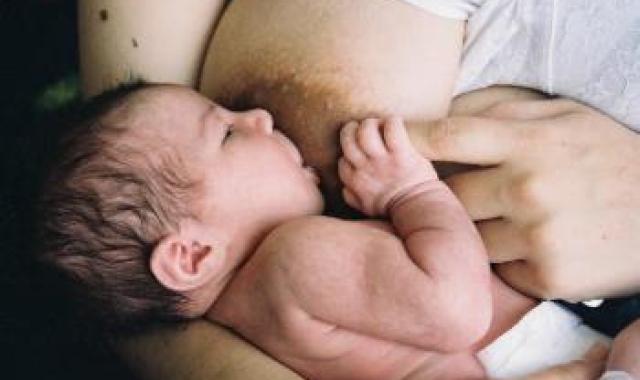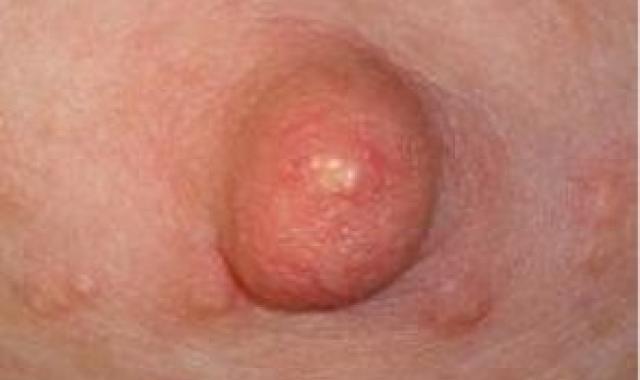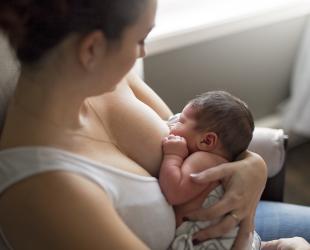White spots on the nipple can be sore, but gentle care helps you keep breastfeeding.

A white spot on the nipple is usually tiny—about the size of a pinhead or a little bigger. It doesn’t always look white. It might be pink or light yellow, and the skin around it can look red and inflamed.
It often feels sore during a feed, and sometimes the pain makes breastfeeding hard.
White spots can show up at any stage of breastfeeding and may come and go. You might hear them called a bleb, a milk blister or a blocked nipple pore.
What causes the white spot?
Not a lot is known about white spots. Scientists think that they happen when the opening of a duct carrying breastmilk to the nipple becomes inflamed and closes. This stops milk from flowing. If your baby is breastfeeding well, they may clear the white spot during a feed and the milk can flow again.

Gentle ways to manage a white spot
If the spot isn’t causing pain or problems with breastfeeding, you don’t need to treat it—it may go away on its own.
If it is painful, try these gentle tips, being very gentle with your nipple to avoid causing more damage. Don't pick at or scrape the white spot.
Keep breastfeeding your baby. They may help clear the spot so the milk begins to flow. It may take some time to clear completely.
Try different feeding positions for comfort.
If breastfeeding is too painful, try hand expressing to get milk flowing.
Use a cool pack if your breast feels inflamed.
- Apply a food-safe oil, like olive or coconut, to soften the spot, and gently wipe it away before breastfeeding.
- Soak your nipple in warm water before feeding or expressing.
When the white spot clears, you'll usually feel instant relief.
If the spot doesn’t go away or becomes very painful, see your doctor. They may prescribe a cream to treat inflammation.
To prevent a white spot from recurring
Breastfeed your baby as often and for as long as they need.
Make sure your baby is positioned and attached well, so they can remove milk easily.
If you need to express, aim to express only as much breastmilk as your baby needs.
© Australian Breastfeeding Association November 2025
McGuire E. (2015). Case study: White spot and lecithin. Breastfeeding Review, 23(1), 23–25.
Mitchell, K. B., & Johnson, H. M. (2020). Breast pathology that contributes to dysfunction of human lactation: A spotlight on nipple blebs. Journal of Mammary Gland Biology and Neoplasia, 25(2), 79–83.
Mitchell, K. B., Johnson, H. M., Rodríguez, J. M., Eglash, A., Scherzinger, C., Zakarija-Grkovic, I., Cash, K. W., Berens, P., Miller, B., & Academy of Breastfeeding Medicine (2022). Academy of Breastfeeding Medicine clinical protocol #36: The mastitis spectrum, revised 2022. Breastfeeding Medicine, 17(5), 360–376.
Obermeyer, S., & Shiehzadegan, S. (2022). Case report of the management of milk blebs. Journal of Obstetric, Gynecologic, and Neonatal Nursing, 51(1), 83–88.


